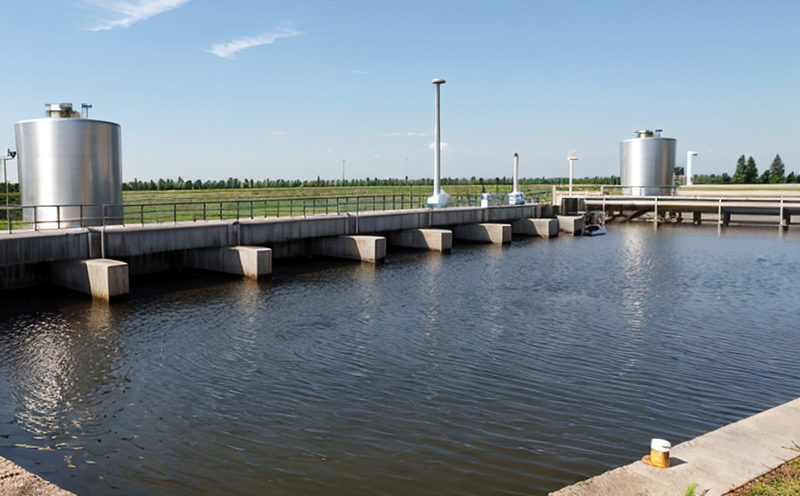EPA Method 1602 Coliphage Detection in Water Samples
The EPA Method 1602 is a standardized protocol used to detect coliphages in water samples. This method is crucial for ensuring the safety and quality of drinking water, wastewater, and other aqueous environments. Coliphages are viruses that infect bacteria; their presence can indicate fecal contamination by indicator bacteria such as Escherichia coli.
This method involves several steps to accurately detect coliphages: sampling, concentration, plating, incubation, and enumeration of plaques. The process starts with the collection of water samples from various sources. These samples are then concentrated using appropriate filtration techniques. After concentration, the sample is plated onto a suitable agar medium containing indicator bacteria.
Incubation allows for the growth of indicator bacteria, during which coliphages interact with these bacteria and form plaques. The number of plaques counted provides an estimate of the total coliphage population in the water sample. This method is widely used because it aligns with EPA guidelines and helps ensure compliance with federal regulations.
The primary goal of using this method is to protect public health by identifying potential sources of contamination that could lead to waterborne diseases. By detecting coliphages early, municipalities and other organizations can take proactive measures to address any issues promptly.
- Sampling: Collecting representative samples from various locations within the water distribution system or treatment facility.
- Filtration: Concentrating the sample by passing it through a membrane filter with an appropriate pore size.
- Plating: Spreading the concentrated sample onto agar plates containing indicator bacteria like E. coli.
- Incubation: Incubating the plated samples at specific temperatures to encourage coliphage activity.
- Enumeration: Counting the plaques formed on the plates, which correspond to coliphages.
The accuracy and reliability of this method are paramount in ensuring that the results are actionable. The use of standardized protocols like EPA Method 1602 helps maintain consistency across laboratories, making comparisons between results more reliable.
Compliance with this method is essential for organizations responsible for water quality management. Regulatory bodies often mandate adherence to such methods to ensure public safety and environmental protection. By employing EPA Method 1602, these entities can demonstrate their commitment to regulatory compliance and provide stakeholders with confidence in the integrity of their processes.
In summary, the EPA Method 1602 is a vital tool for detecting coliphages in water samples. It plays a crucial role in maintaining safe drinking water standards and ensuring environmental health by identifying potential sources of contamination early on.
Applied Standards
The EPA Method 1602 aligns with several international and national standards that ensure its accuracy, reliability, and compliance. These include:
- EPA Method 1602: This is the official method published by the U.S. Environmental Protection Agency.
- ISO 18734:2015: International standard for the detection of coliphages in water and effluents.
: American Society for Testing and Materials method for detecting coliphages in environmental samples. - EN 12846:2003: European standard for the detection of faecal pollution in water by means of indicator bacteria and viruses.
The use of these standards ensures that the testing process is consistent, replicable, and meets regulatory requirements. Compliance with such methods guarantees accurate results and fosters trust among stakeholders.
Frequently Asked Questions
Benefits
- Regulatory Compliance: Ensures adherence to EPA regulations on water quality and safety.
- Precision: Provides accurate results through standardized procedures.
- Consistency: Results are consistent across different laboratories using the same method.
- Early Detection: Identifies potential contamination sources before they affect public health.
- Trustworthiness: Builds confidence among stakeholders regarding water quality and safety measures.
- Efficiency: Streamlines the process of detecting coliphages, ensuring timely reporting to regulatory agencies.
International Acceptance and Recognition
EPA Method 1602 is widely recognized and accepted by various international bodies. It aligns with ISO standards for environmental testing and is endorsed by the World Health Organization (WHO) as a best practice in water quality monitoring.
The method's global acceptance is due to its reliability and alignment with international guidelines. Many countries use this protocol as a benchmark for their own national standards, ensuring that water safety practices are consistent worldwide. This widespread recognition enhances confidence in the results produced by laboratories using EPA Method 1602.





